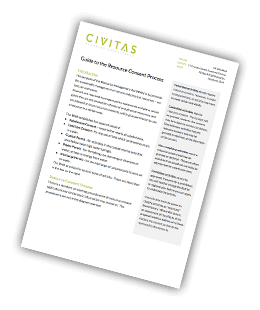Medium Density Residential Standards - FAQs
By Iain McManus
The Medium Density Residential Standards ("MDRS") proposed under the Resource Management (Enabling Housing Supply and Other Matters) Amendment Bill will permit significant intensification in New Zealand’s main urban areas.
In this blog, I address some of the questions that people have been firing at me since the Bill was released.
What are the MDRS?
The MDRS are the rules and standards required to be incorporated into district plans for residential development in the main urban areas of New Zealand. The standards are outlined in detail in my earlier blog.
Can I seek changes to the MDRS?
You can seek changes to the MDRS by lodging a submission on the RMA Amendment Bill.
Submissions can be lodged via this link and close at midnight on 16 November 2021.
When will the MDRS come in?
Councils must notify their plan changes to incorporate the MDRS by 20 August 2022.
In a departure from normal practice under the RMA, the MDRS will have legal effect and be operative from the date that the Council notifies its plan change.
That means landowners will be able to rely on the MDRS from 20 August 2022, or sooner if the Council notifies its plan change before then.
Do I get a second crack at the MDRS when councils notify their plan changes?
No. Councils will be required by law to incorporate the MDRS specified in the (eventual) Amendment Act so using the plan change process to object to the MDRS will be futile.
What will be the impact of the MDRS in the … zone under the Auckland Unitary Plan?
This question is covered in detail in my earlier blog.
What if Council does not apply the MDRS to my property when it notifies its plan change?
Councils can only exclude sites from the MDRS where a “qualifying matter” applies.
If Council excludes your site, and you disagree with that, you can lodge a submission on the plan change challenging the qualifying matter being relied on to exclude your site. You will then have a right to speak in the hearing on the plan change.
If the plan change is adopted, and your site is still excluded, you will not be able to apply the MDRS, and the current zone provisions will continue to apply, or any alternative set of provisions that might be proposed by Council through the plan change.
What if my property is within a special character overlay – will the MDRS apply?
To date, Auckland Council has identified special character as a potential "qualifying matter", however, special character is not listed as a qualifying matter under the National Policy Statement - Urban Development ("NPS-UD") so the Council will need to tread very carefully in pursuing this approach.
Council is currently undertaking a site by site analysis of all properties in the various special character overlays to determine what to do with sites in these overlays. This will eventually result in one of following outcomes for each site:
- Removal of the overlay to enable intensification in accordance with the intent of the NPS-UD (either by way of up-zoning or by application of the MDRS to the site);
- Amendments to the overlay and/or underlying zoning to accommodate more intensive development than provided for at present, but not as intensive as would otherwise be required under the NPS-UD, based on the site-specific character of the location; or
- Replacement of the overlay with an historic heritage overlay to exempt the site or area from intensification under one of the qualifying matters (i.e. matters of national importance) specified in the NPS-UD.
What if the infrastructure in my area is inadequate to support more intensive development?
Auckland Council has signalled an intent to include insufficient infrastructure as a qualifying matter that may make intensification inappropriate in some areas.
However, insufficient infrastructure is not listed as a qualifying matter in the NPS-UD and Ministry for the Environment officials have advised that it is not the intent of the government to see infrastructure used as a qualifying matter.
It will be interesting to see how the issue unfolds over the next year or so.
What if my site has covenants restricting development below that permitted under the MDRS?
At this stage, the covenants will still apply, so you may not be able to develop your site to its full potential under the MDRS.
However, watch this space, as the Ministry for the Environment and the Ministry of Housing and Urban Development have indicated that they may look into this.
What if I infringe the MDRS?
You will need to apply for resource consent for a restricted discretionary activity.
There are no matters of discretion or assessment criteria for such applications in the Bill – councils will need to create these through their plan changes to implement the MDRS.
Will resource consent applications be notified?
The Bill states that applications to develop up to three units that do not comply with the MDRS must not be publicly notified but can be limited notified (i.e. served on directly affected persons).
A development of more than three units that complies with the MDRS must be processed on a non-notified basis.
What if the building proposed for the property next to mine is butt-ugly?
There is no scope for Council to control the aesthetics of a development of up to three dwellings complying with the MDRS. You will need to negotiate directly with the developer if you want to secure changes.
If the developer is proposing more than three dwellings, the district plan may require resource consent for that development and the matters of discretion for the application may give Council some influence over the aesthetics of the building. You will need to check the provisions of the applicable district plan.
Feel free to get in touch if you would like to check the application of the MDRS to your land holdings.

